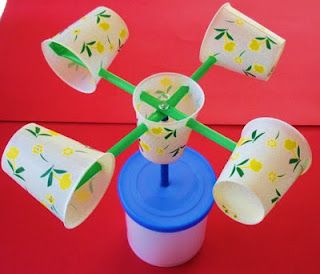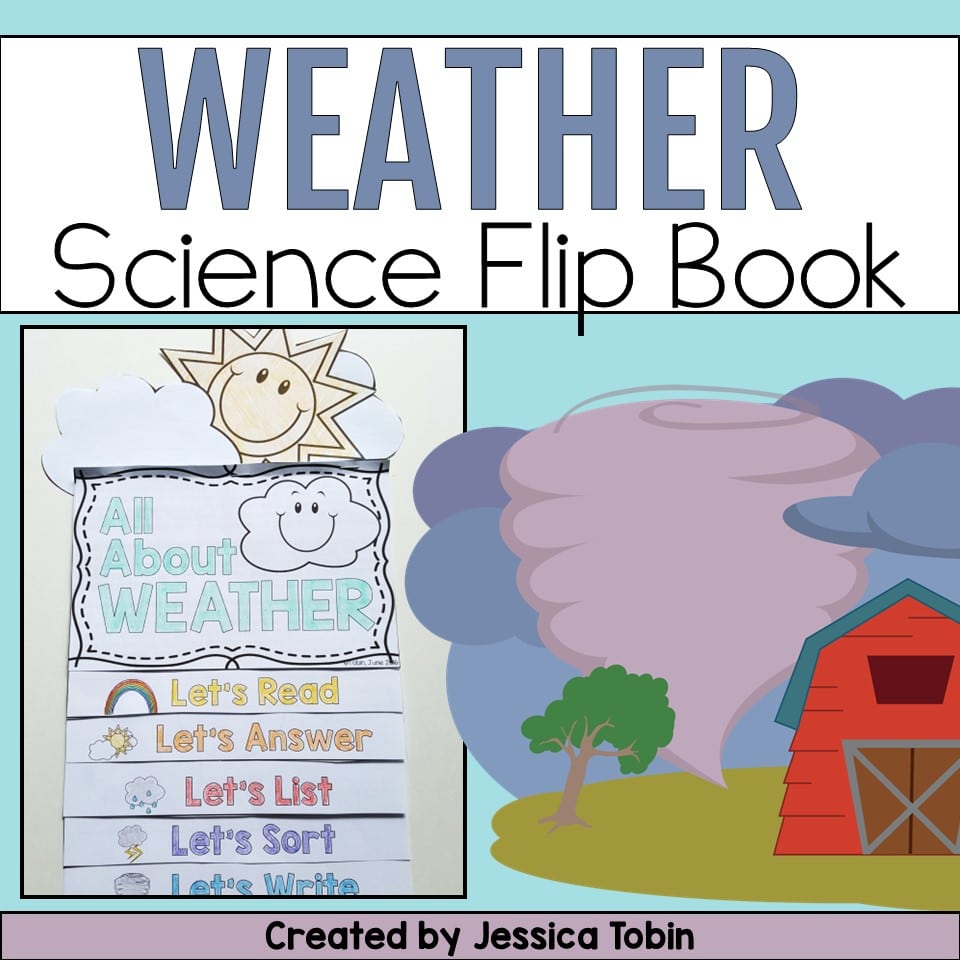
Over the next week, I am bringing you four science blog posts. I have started a new science product line and wanted to make some fun blog posts to go with them! To kick off this new blog series, I am going to blog about some fun ideas for teaching weather!
Whenever teaching a science topic in the primary classroom, I am a firm believer in introducing the topic first. I allow the children to learn a lot of information at the beginning before digging in. Then, they will move into hands-on experiments and fun activities. And, I love wrapping up units with review and crafty activities. I have split this blog post into three parts.
1. Learning About Weather

First, when starting out with the weather unit, ask students to list different weather patterns that they already know. Then, sort between dangerous and safe weather patterns and draw or write their responses as students list them.

(Source: Cutting Tiny Bites)
Then, head on down to the local library and grab some books for your students. Put them in a reading center or add them to your daily lesson plans. Introducing nonfiction and fiction stories about weather is a great way to start your unit.
Here are links to a few of my favorites for teaching weather. Each of these are affiliate links to Amazon:
- Everything Weather by Kathy Furgang
- Extreme Weather by Thomas Kostigen
- The Everything Kids’ Weather Book by Joe Snedeker
- Extreme Weather by H. Michael Mogil
- Weather by Kristin Rattini

(Source: Weather Unit)
This weather unit comes with reading passages, comprehension activities, writing activities, and other no-prep activities. These will help students to learn about weather, disaster weather, clouds, weather instruments, and more.

(Link: Weather Flip Book)
2. Testing Out New Knowledge:

(Source: Ideas by Jivey)
This homemade anemometer is an amazing idea to teach students about weather instruments. Teaching wind direction and wind speed is important in understanding weather patterns and climates.

(Source: Learning Ideas Grades K-8)
Above, you see another picture of a homemade anemometer.

(Source: Little Bins for Little Hands)
Above, you can see the science experiment for making a tornado in a bottle. I remember these bottles from my childhood. I loved playing with these kinds of projects, and it helped to show me the way that twisters formed, too.

(Source: Learn Play Imagine)
Above, the blogger said she couldn’t get the spark photographed. However, it’s still a wonderful experiment of how lightning can form when teaching weather.

(Source: Coffee Cups and Crayons)
This exciting activity shows students how rain falls from clouds.

(Source: Crunchy and Green)
I love this quick and easy activity to teach students the different types of clouds they find in the sky.
3. Reviewing Knowledge:
Below, this unit below comes with many learning pages and writing pages that you can use throughout your weather unit.

(Source: Weather Unit)
Interested in a FREE water cycle activity?

Stock Up on Resources for Teaching Weather Below
Need a no-prep resource? How about a fun flip book? If you’re looking for supplemental materials for your plant unit, check out this Weather no-prep set! The unit comes with printable and digital versions of reading passages, cut-and-paste activities, graphic organizers, vocabulary sheets, and more!



Or, check out this flipbook or set of lesson slides. These resources are great for your Weather unit! Grab one of these to make your planning and prep so much simpler. Click the buttons below to get a closer look:




















